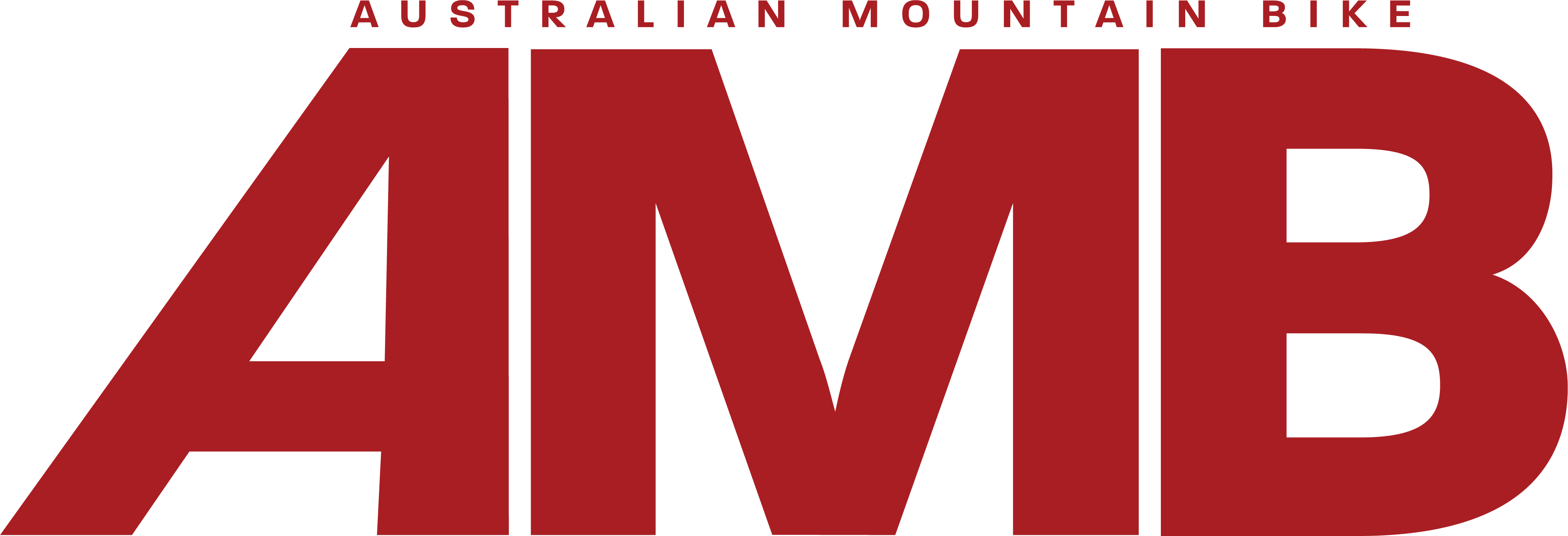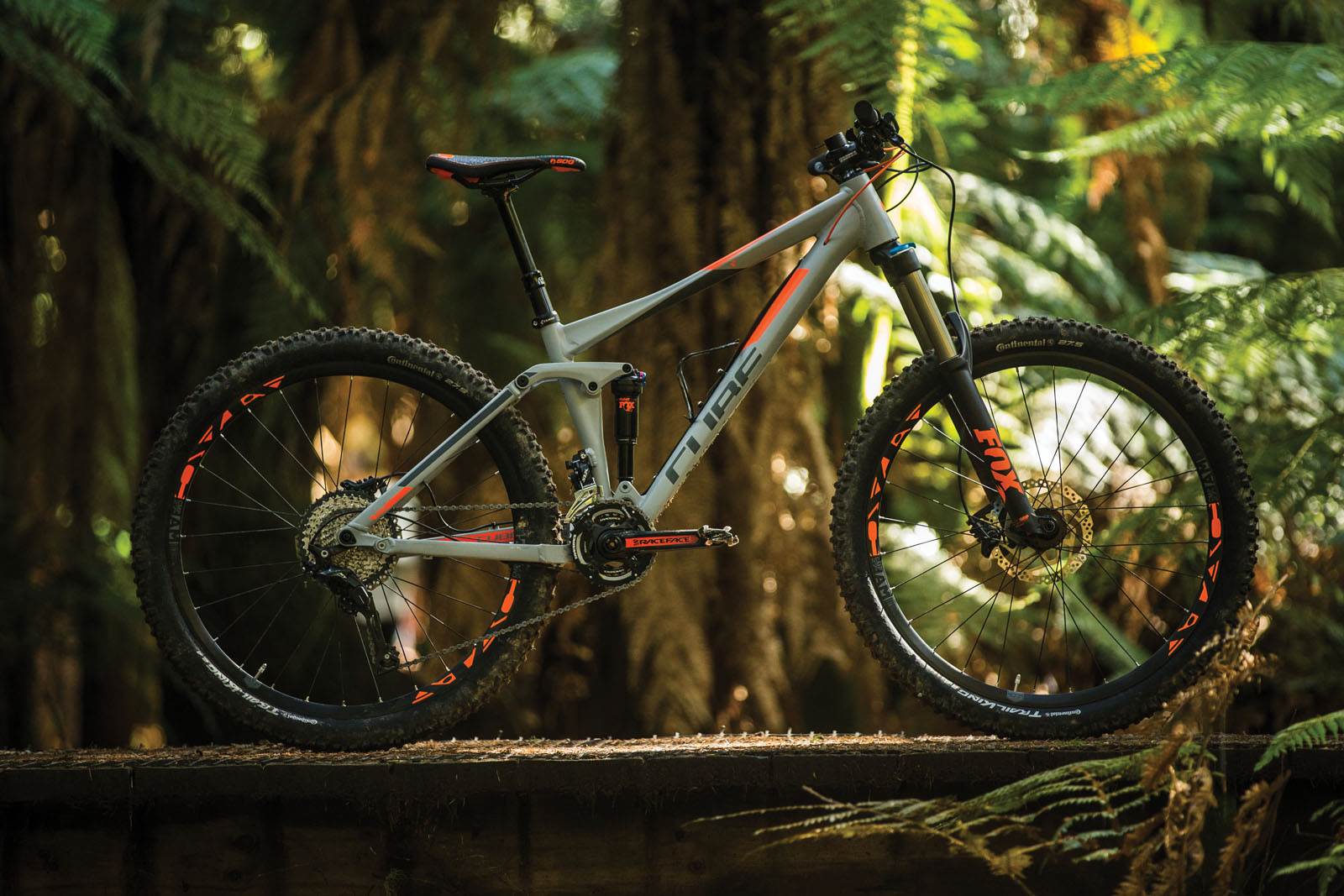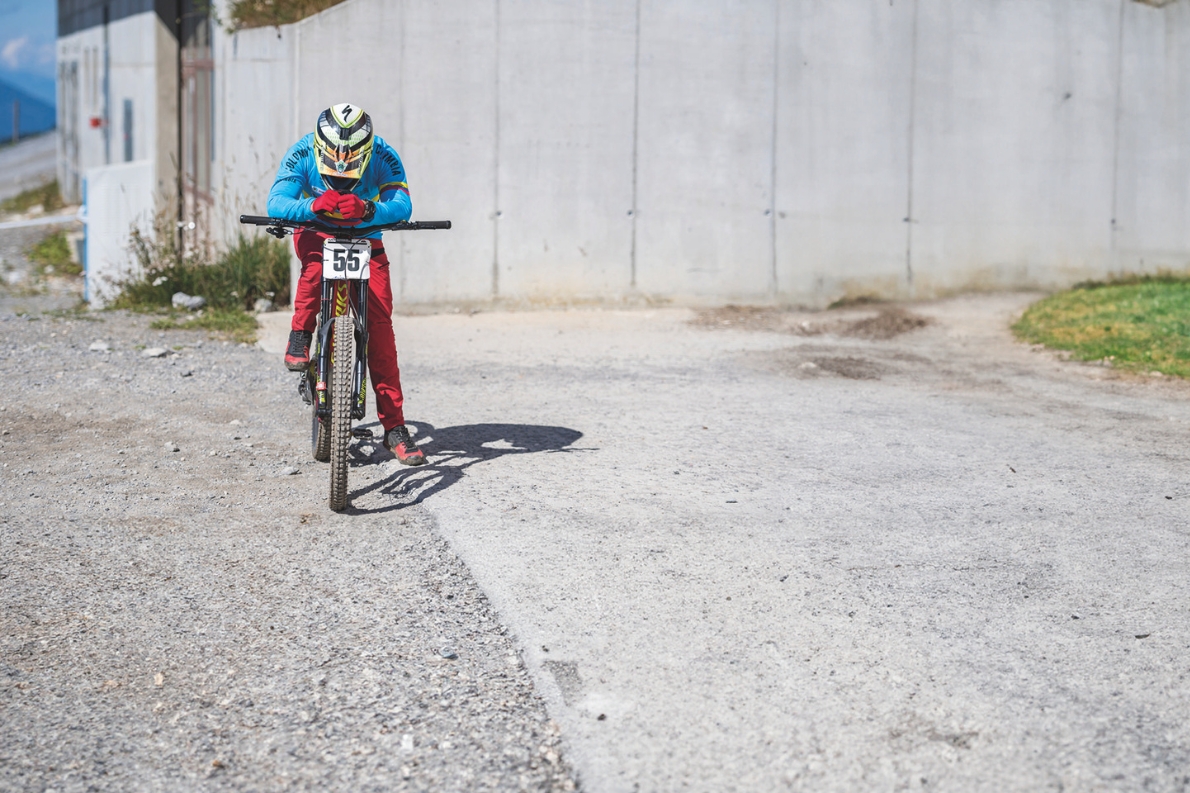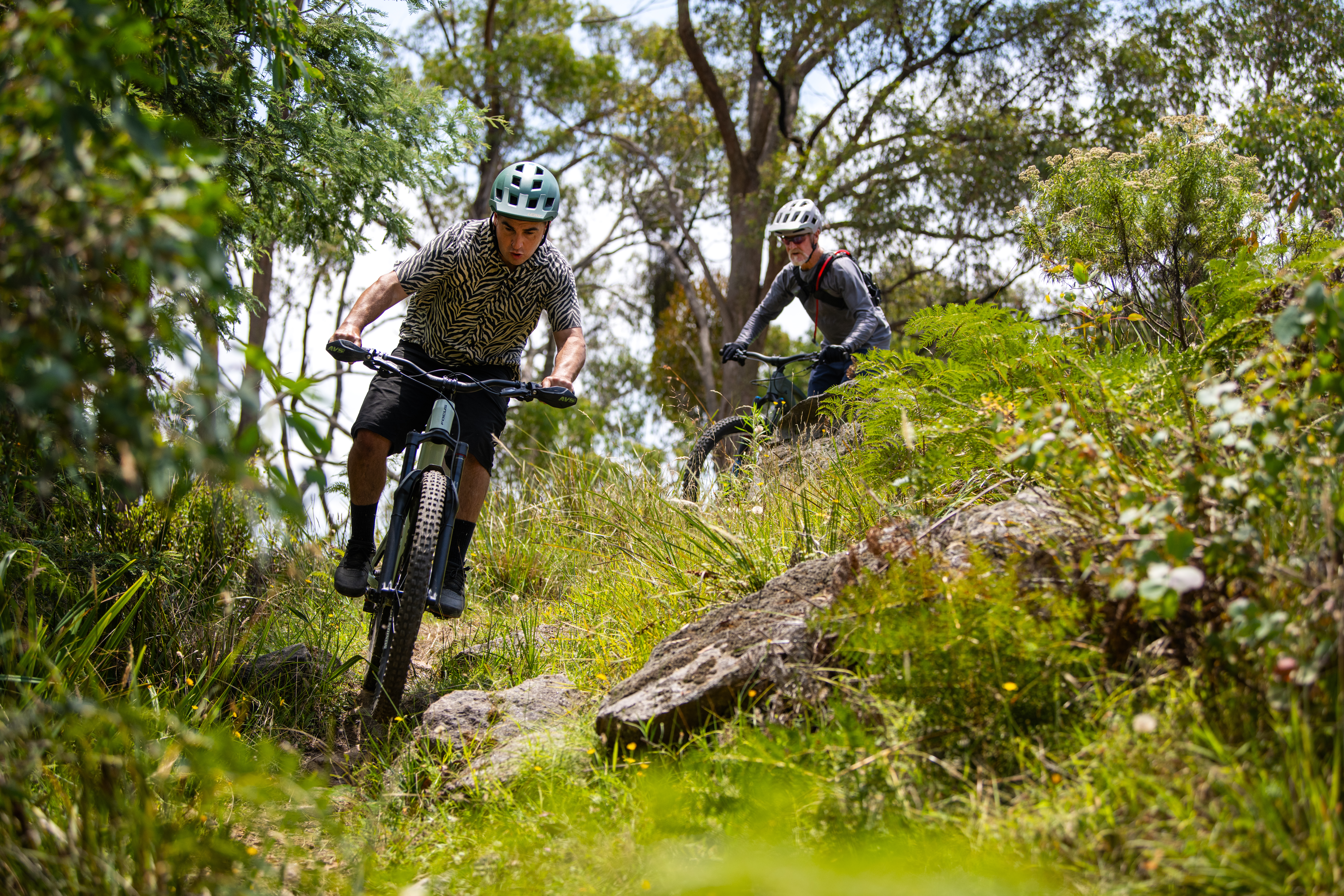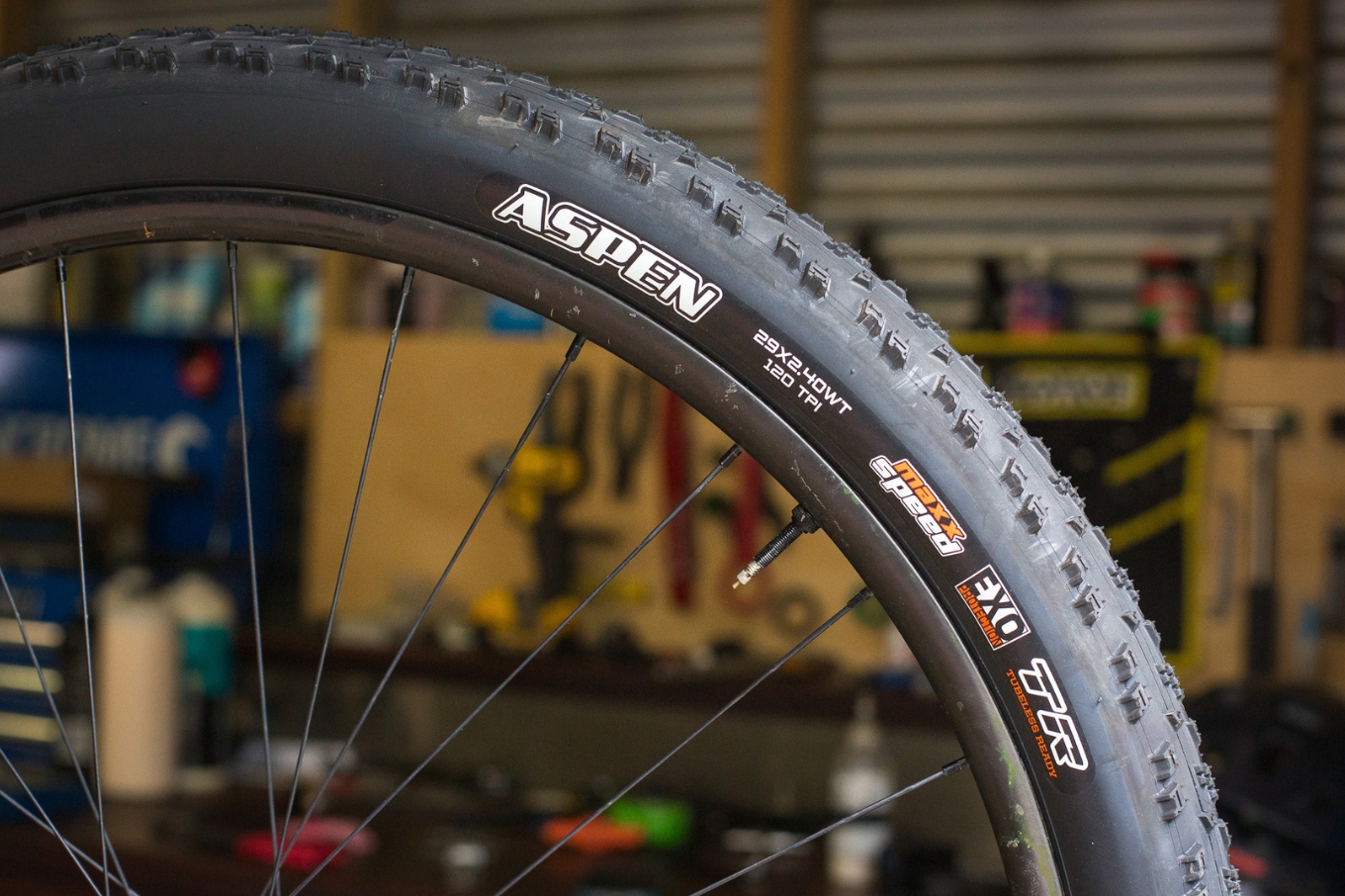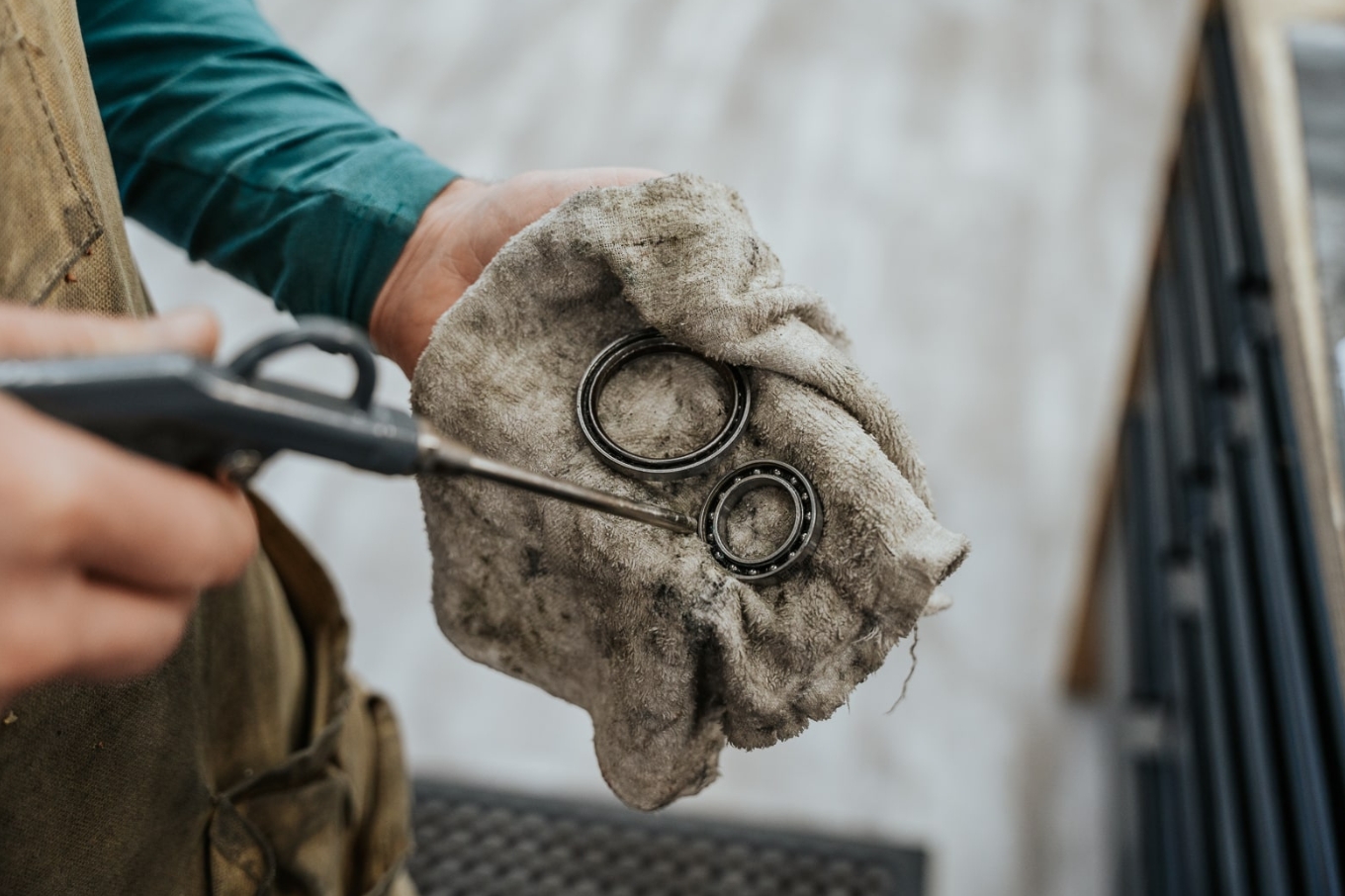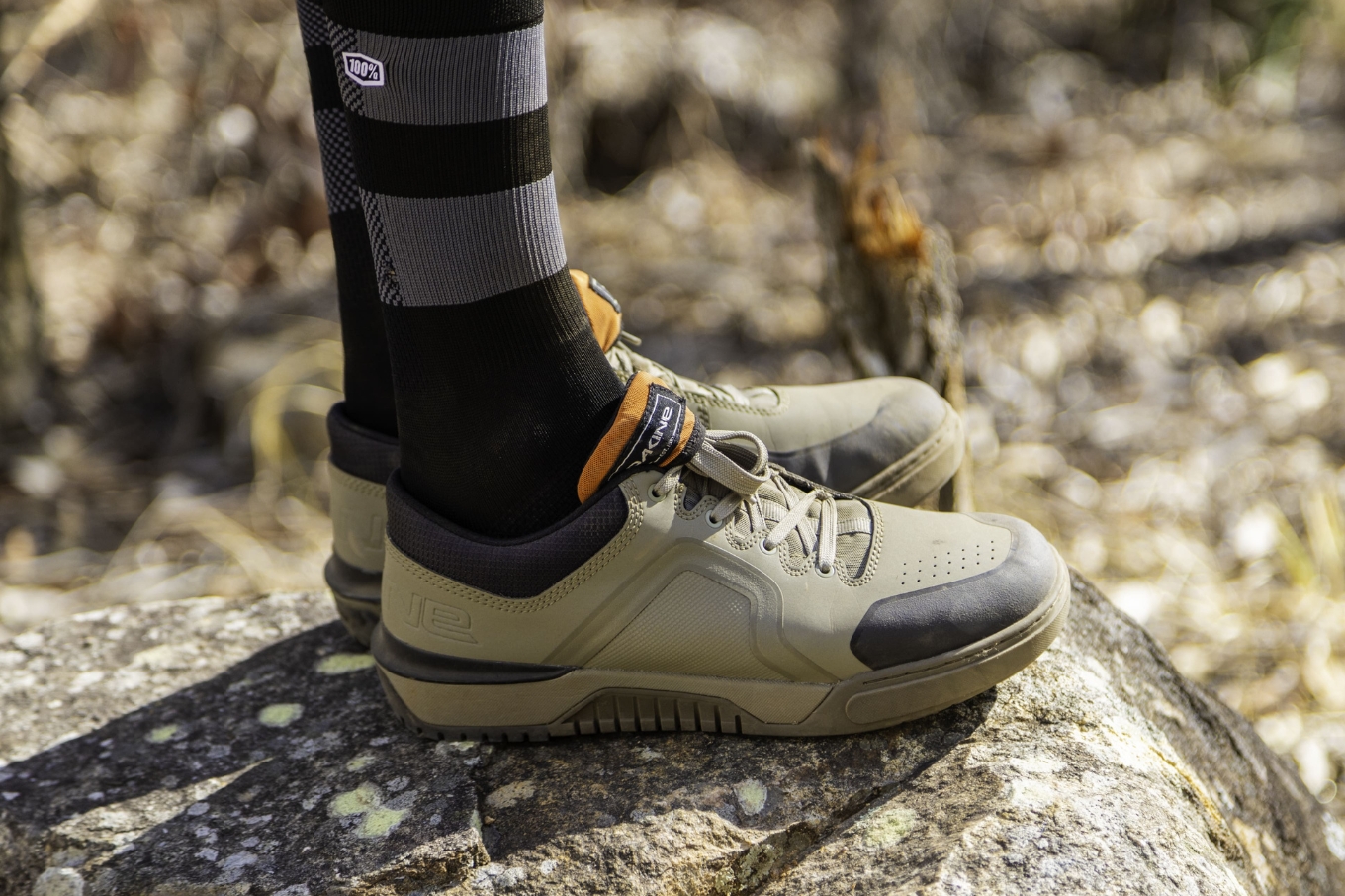TESTED: Cube Stereo 140 HPA PRO
The entry level Cube Stereo 140 HPA Pro is a burly beast that will likely suit the strongest riders
Photographer: Tim Bardsley-Smith Tester: Anna Beck
Cube is a German bike manufacturer, founded in 1993. Despite being a relatively new company (in the grand scheme of bicycle production) Cube are now exporting to 60 countries and are best known for their range of mountain bikes. Anyone with a keen interest in the Enduro World Series will know the brand’s pro team, the Cube Action Team, featuring athletes such as Nico Lau and Greg Callaghan.
Though Cube have been in Australia for a number of years, they’re not a major player in the market as yet, although they do offer a complete range of bikes for all mountain bike disciplines: from cross-country to downhill.
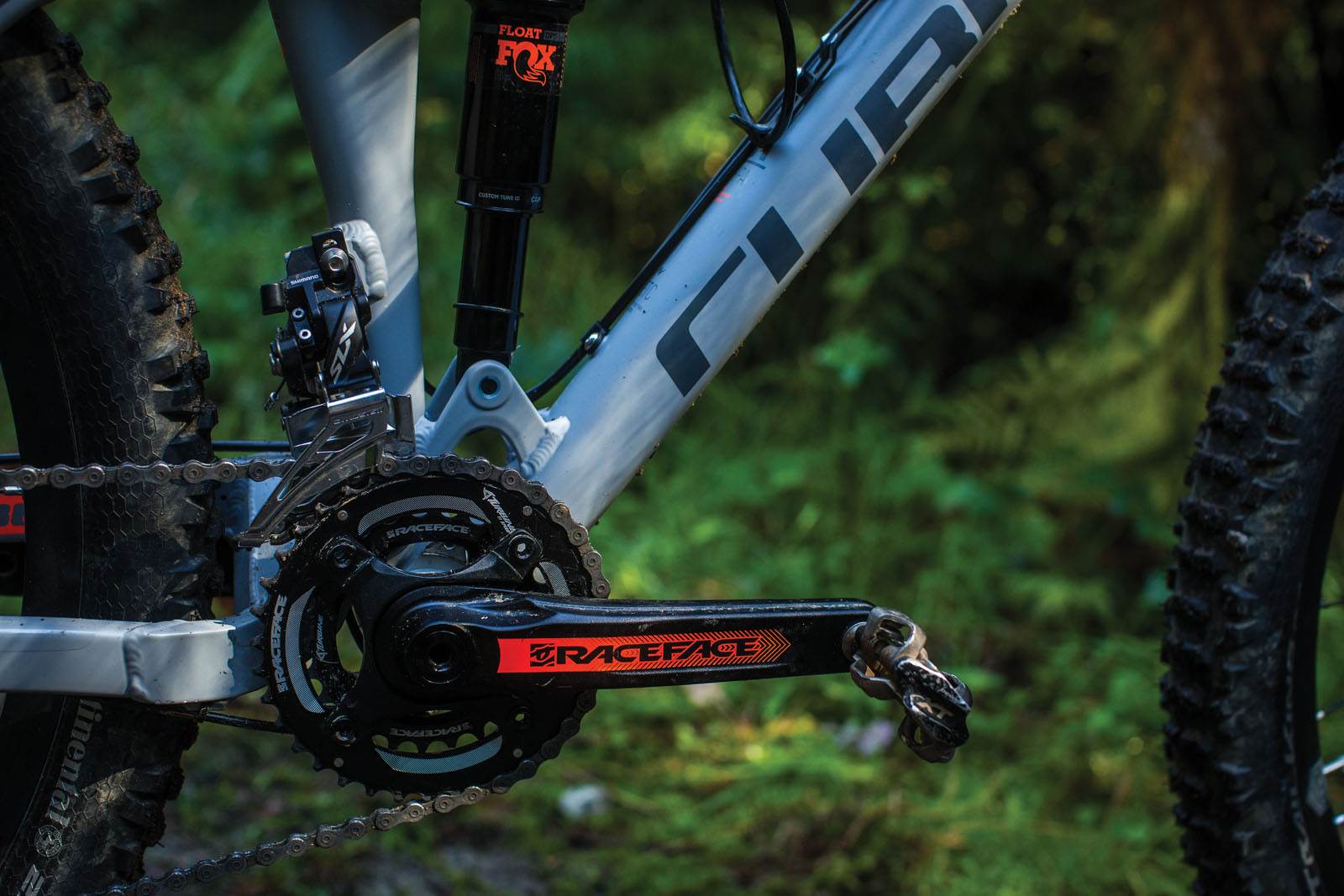
We tested one of the most popular mountain biking platforms at the moment – a 140mm 27.5” trail bike – in the form of the Cube Stereo 140 HPA Pro. This is Cube’s entry level bike in this Stereo range: sporting an aluminium frame, and a mixture of XT, SLX and RaceFace components, along with the Fox Rhythm and Fox Float DPS shock, and Cube’s own proprietary dropper.
First Impressions
Looks-wise, the Stereo is on point with matte grey and neon orange; a colourway that has been embraced recently by multiple mountain bike manufacturers. Having said that, this colour scheme will likely be quite divisive and elicit a love/hate type of response.
The lines of the bike aren’t unappealing. Cube have specced the bike with both black and orange cables which once again is a risky move; what one person will love the next will feel looks cheap. Interestingly enough, the bike features internal cable routing which is aesthetically a win for the end user, and inevitably a bug-bear for your mechanic. The four bar linkage and sturdy welds leave little to the imagination regarding where the weight of the bike is held, though the Answer Atac AM wheel set also holds a fair bit of beef but also plenty of reliability.
Continental Trail Kings adorn the hoops, and while they’re not the sturdiest of tyre in regards to side-wall stability, the tread pattern is a good all-round option. The drivetrain is a picture of XT and SLX, with RaceFace cranks and cockpit components – good solid reliable options.
The initial assessment of the Stereo was that it was a bit weighty; highlighted by the effort required to hoist it onto the bike rack. But given it is built for more down than up, and has the gearing to get it up a hill if the need arises – would it be an issue on the trail?
The bike’s build is a solid pick. If it was our own we would simplify the drivetrain to a 1x set up, crack out the tubeless goop (as the Stereo came assembled with tubes) and add some burlier rubber. However, the question it all boils down to is: “How does it ride?” So we took to the slopes of New Zealand to find out.
On the trail
The bike tested was the 18” model; perhaps slightly on the large side for us but not out of the ball park in terms of length when paired with a 50mm stem. The top tube length on the bike, at 590mm, sits in the middle between the long and low tribe of bikes (such as Yeti, Santa Cruz, newer Giants) and the shorter options (Rocky Mountain, for example) in the equivalent size.
My first ride on the Stereo was wild to say the least, off the back of a day of travel and a shoulder injury. Heading to a dedicated all-mountain/downhill park, kitted up with a full-face helmet, the very first impressions was that there was a lot going on with this bike. I had to get my bearings around a machine running a 2x drivetrain, with fork and rear shock settings (manual lockout) and a dropper post.
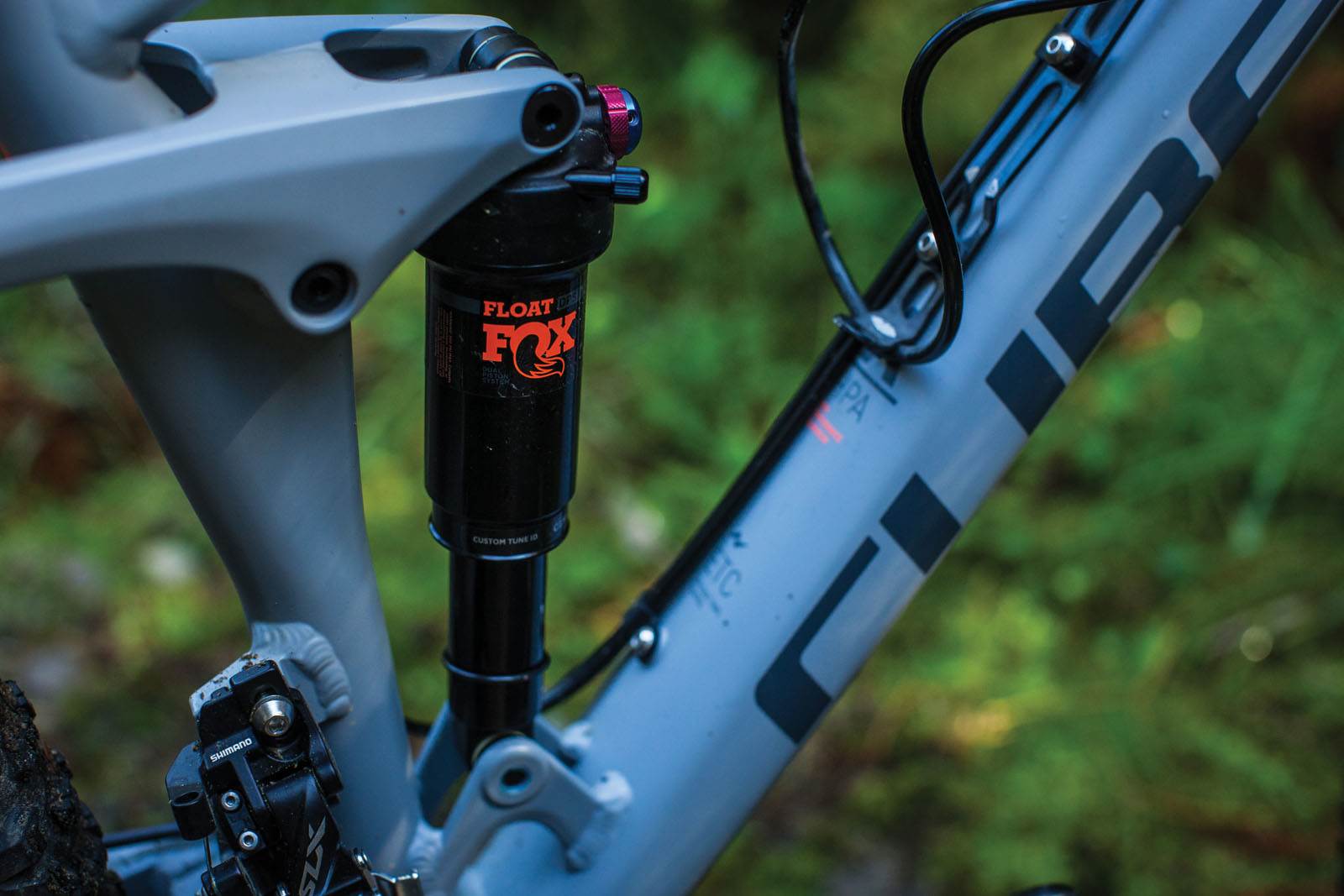
Straightaway, it was noticed that the suspension was quite active; our trail riding mates remarked how wild the rear end was going down some of the descents. Despite setting the sag on the Fox Float DPS at around 25-30%, the shock seemed to be factory specced for a larger rider; the air volume required for a 60kg rider with adequate sag was scant and thus the shock was perhaps too linear in its performance. It managed to bottom out several times, despite the pressure being upped to an even higher sag-rate. For most trails, the best workaround was to ride in the mid-setting. However, an EVOL air can or a set-up with a different air-volume spacer could have eradicated this problem for a smaller rider. Your shop should help you with this before you roll away.
The Fox Float DPS provided minimal pedal bob and was quite efficient when the trail turned skyward; the Stereo climbed quite well, if not quickly.
The Fox Rhythm fork, boasting 150mm travel, features a slightly weightier chassis than their higher end models (at this stage the Rhythm is available OEM only), yet was a reliable workhorse. Together with the 67.5 degree head tube angle, the bike was slack and stable without being bland, and the Rhythm was quite true to previous user experiences of high-end Fox forks despite it being an entry level model. While it lacked the same level of buttery progressiveness offered in the brand’s premium lines, it wasn’t far off the mark, which was was pretty impressive for an entry level component.
The real struggle came due to the manoeuvrability of the bike; which was partly due to it being slightly on the long side for our tester, in addition to the overall weight of the bike. The bike felt planted and stable… until it didn’t. That was especially the case when turning up the speed and gnar since due to the effort to move the Stereo around.
As some wise guy once said, “Every object persists in its state of rest or uniform motion in a straight line unless it is compelled to change that state by the forces impressed upon it”. The Stereo loved to go in a straight line, and did compel you to hit up jumps and drops. But if something threw you off line, you could bet your bottom dollar there would be a battle royale to get back on the straight and narrow. The fight was often lost, and resulted in the machine careering off on a new backcountry line in sudden, unplanned, nouveau freeride-style. Either way, it got old fast and in the end the speed had be toned right down in order to control the Stereo and all its meatiness.
I know what you’re thinking: “It’s not bad luck, it’s bad aim”. A stronger rider with more upper body strength would have fewer problems on the fast technical trails on the Stereo, but this really was a wild pony to ride at times. It was proven even further on subsequent rides by the energy required to manoeuvre the bike on beginner-friendly trails.
As an XT-specced, 140mm travel bike retailing for $3999, the whigher weight of the bike comes with the territory – but it is worth understanding how it plays out on and off the trail. We were charged excess baggage several times having packed the bike into a regular EVOC pack, which we had never experienced with other trail bikes before. And when we chucked it on the scale and found it was 15kg (with Shimano cross-country pedals) it all made sense.
We experienced some technical difficulties with the propriety Cube dropper. Though the dropper could be manually lifted with the lever held, it kind of defeats the purpose of having a dropper. Despite this, the functionality of dropping the post was intact, and with 150mm drop it was more than enough to get down steep slopes. If you were purchasing the bike, any such problems would be solved by your Cube dealer.
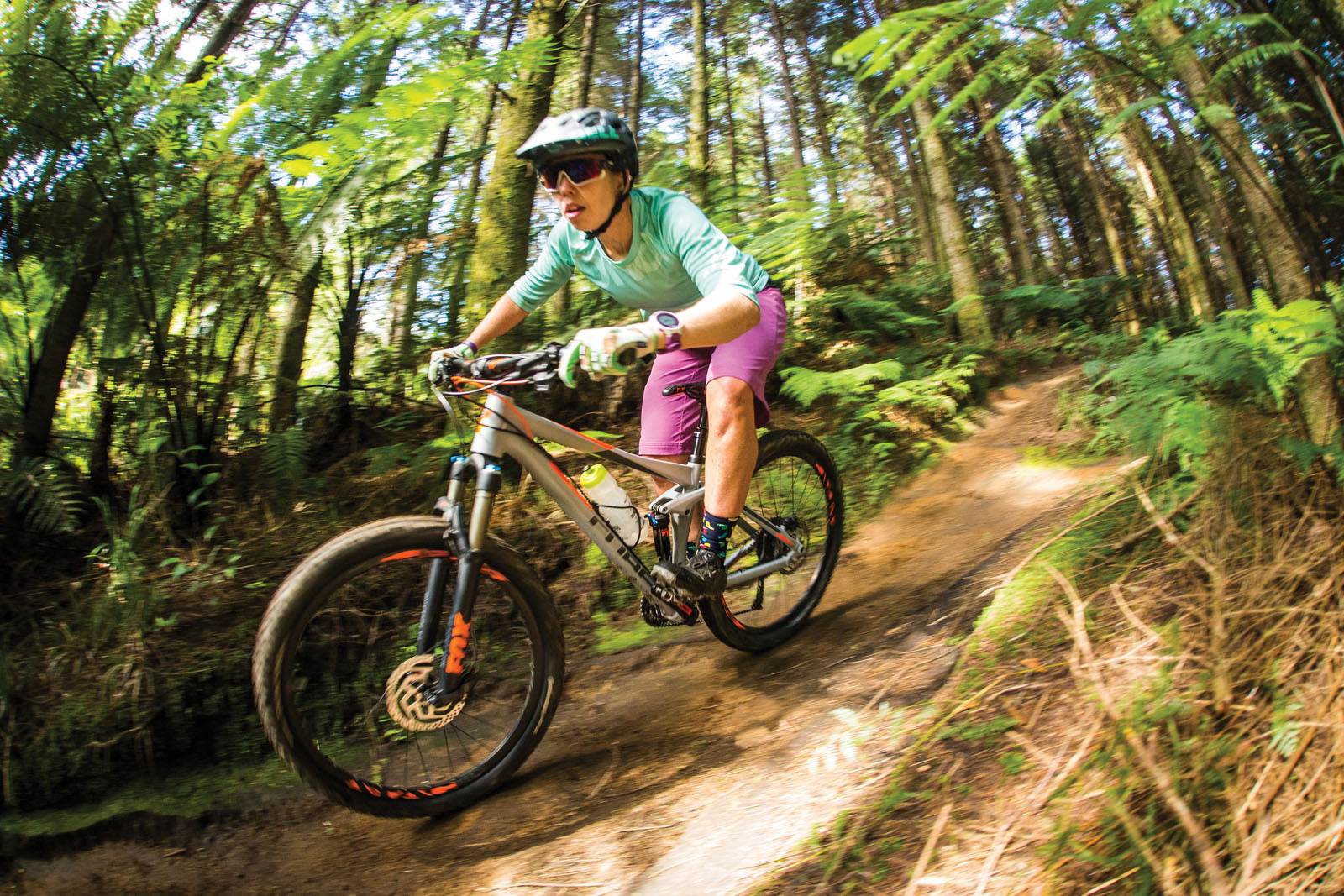
Likewise, the drivetrain features some quality components, with XT and RaceFace in the mix, but we felt that the 2x drive train complicated a bike that already featured a dropper lever, front fork lockout and platforms and rear shock lockout and platforms. For a bike born in Europe, the 2x spec makes complete sense. If you live somewhere with less vert, think about switching to 1x for the sake of simplicity.
There was a lot to think about on a bike and when you’re careering down a precarious wet, rooty descent, the last thing you want is something that’s not working, like the dropper post or being stuck in the small chain ring. There were a lot of cables and a lot going on with the Stereo. It’s a lot to take in for someone who is perhaps taking their first foray into a dual suspension trail bike.
The Answer Atac wheel set was reliable and with the 15mm axle there was more than enough lateral stiffness. The Continental Trail King 2.4” tyres wouldn’t have been our first choice, but they performed remarkably well given the varied and unforgiving terrain we tested the bike on. Likewise, the Shimano brakes were reliable and efficient, borrowing heavily from their big brother XT and XTR. Perhaps lacking a tiny bit of bite compared to higher-end offering, they were solid performers regardless.
Our Take
The Cube Stereo 140 HPA pro is an entry level foray into a hard-hitting trail or all-mountain bike. For the strong rider who is looking to get into trails requiring a bigger bike, or enduro racing, the Stereo could be a consideration.
As a 140mm trail bike that retails at almost $4k, the Stereo packs features and packs some beef, and this interfered with its handling for the smaller rider. We would love to take a higher-end model out for a burl for a bit of comparison, as divorcing the geometry from the weight can become quite difficult to discern on wild technical trails.
That being said, the Stereo had a solid Shimano build, reliable Fox fork and shock, and a frame that is bombproof. The Boost hubs and burly wheel set also put the bike in good stead as a solidly reliable trail rig. For the new and enthusiastic hucker, this could be a winning mix.
Cube have gone the distance by using internal cable routing, stocking a dropper post and matching the cables to the frame colourway – small touches but ones that could set the Stereo apart from other 140mm trail bikes in this price range.
| Cube Stereo 140 HPA Pro | |
| Weight | 14.6kg |
| RRP | $3,999 |
| From | 99 Bikes |
